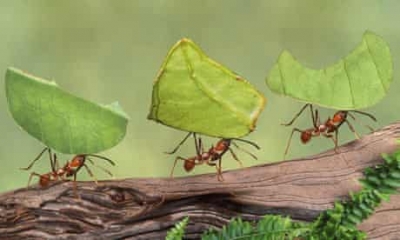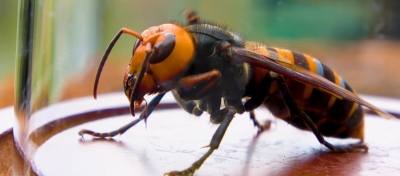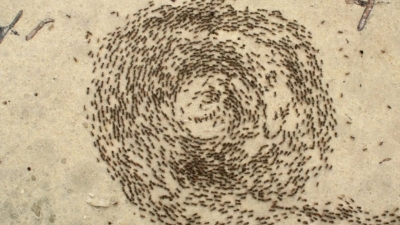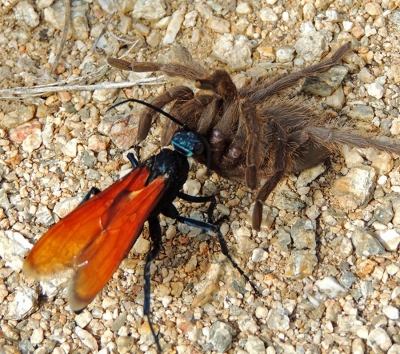Which are the clever bugs with their shrewd capabilities?

Extraordinary fungus farmers
You've probably seen pamphlets on how to grow mushrooms at home and make money. Not surprisingly, many of us wonder if it would even work out. But leafcutter ants have no such qualms - they've been master fungus farmers for centuries. If you've seen a leafcutter ant carrying a piece of leaf you assume that it's going to be food. But these leaves are taken to a garden space and used as fertilizers on a fungal farm tenderly cared for by the ants. Some ants even lick the growing fungi to spread a type of bacteria that kill other competing fungi, thus acting as a pesticide. If this isn't advanced farming, what is?
Tireless invaders
Pine processionary caterpillars bear an uncanny similarity to Genghis Khan and his army. While Genghis Khan invaded cities, these caterpillars target pine forests. Hardly 2 cms in length when they emerge out of their cocoons, these caterpillars are blessed with super strong mandibles capable of chewing pine needles soon after birth. But that's just the beginning - - as they grow, they form a single line army and invade pine trees. They march bravely even at sub-zero temperatures and destroy massive coniferous forests in a very short time!
Choosing summer retreats
Do you dream of warm, sandy beaches in the winter and snowy slopes during the sultry summers? Guess what? Locusts love such getaways, too. You may travel solo or with a small group of friends or family, but locusts do it differently. When they migrate together, what a sight it is! Referred to appropriately as the 'gregarious phase', millions of locusts fly together in a mighty swarm that intimidates creatures big and small. They can ravage crops and forests leaving behind a sorry mess. They travel for very long distances, sometimes from northwest Africa all the way to Britain or even to the Caribbean if they fancy a vacation!
A taste for electronics
What was once the home of fire ants is now owned by tawny crazy ants that invade houses with a kind of determination that is plain scary! There was a time when people hated fire ants but they are nothing when compared these ants. Fire ants built mounds in backyards and hardly bothered you unless you stepped on their home. These crazy ants have been driving people mad. This is particularly because of the interest they show in electronic equipment. They have been spotted forming bridges between electrical contact points and causing short circuits!
Simple brain, amazing focus
Dragonflies possess one amazing quality that many of us struggle with. Did you know that dragonflies can focus on a target and filter out other useless information? This process is known as 'selective attention'. Imagine how useful it would be if we could do that. If only dragonflies could write a book on focus and concentration... now that would be a bestseller!
Picture Credit : Google


